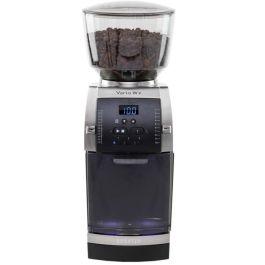Hornsolutions Swen
Well-Known Member
Kafatek stellt wohl die besten Haushaltsmühlen her:
Auch Weber ist dabei:
Der ultimative Einzeldosenschleife...ps://youtu.be/SKwQJBgTvho?si=6YMkC7U4Qnm2aYpD
Kafatek stellt wohl die besten Haushaltsmühlen her:
Auch Weber ist dabei:
While I agree that the grinder is important, née critical, what you do with the grinder is even more important.
It does no good to use an endgame grinder if you aren’t capable of adjusting it toward achieving a specific goal.
One tried and true method for a newbie to learn is to pick bean variety, roast, weight, pressure profile, and water temperature. Pick a target ratio of bean weight to espresso weight. Pick a target time for the extraction. Then play with the grind, finer to slow the extraction and coarser to speed it up. The difference in the extraction time due to the grind, from too fast to too slow, is often surprisingly small, perhaps describable as minuscule.
Of course the proof of success is in reaching your taste goals, which may be as simple as tasting hints of the flavors noted for the beans on the bag. Or your goals may be more complex, especially if you progress to roasting single origin beans yourself.
My point is that throwing a few thou into a grinder isn’t going to guarantee a good pull. It just makes it more likely that your experiments won’t be thwarted due to grinder variability issues.
A good grinder will have a rigid frame, tight tolerance bearings, stable torque under load, and properly aligned high quality burrs.
It will not significantly retain partially ground beans from the last grind.
Everybody has their own routine. If you are at the early stages of developing yours, part of the tuition is in making your own errors and learning from them. You don’t need an endgame grinder to learn how to grind … but once you have first hand knowledge from your own experiments, you may appreciate an endgame grinder. Or not. Some folks go through this, and end up preferring a Superautomatic. This forum is actually about automatics.
You can try this one, it works pretty well.Does anyone know of a good quality standalone milk steamer?
The smaller portafilter is my preference for manual pulls. The coffee column is taller, and the tamp more forgiving.I think I now have it down to two choices:
Olympia Mina and the Forge.
The only downside I can see on the Mina is the smaller portafilter size of 49.
Downside on the Forge is having to take it apart and reassemble every time you use it.
I think I now have it down to two choices:
Olympia Mina and the Forge.
The only downside I can see on the Mina is the smaller portafilter size of 49.
Downside on the Forge is having to take it apart and reassemble every time you use it.
I’ve been considering the Strietman.Strietman is probably the nicest manual machine, I may get one at some point.
The Forge's portafilter basket is held on by threads but it's really fast and easy to use. It's just a chunk of metal with nothing to clean or maintain except a few o-rings. IMO, a std size portafilter basket is an advantage as there's a huge selection.

 www.chriscoffee.com
www.chriscoffee.com



I’ve decided to go with the Olympia Express Mina lever press and the Timemore 64S grinder.
This will be quite a departure from my automated process with the Breville!
Now looking for a standalone Steamer (that doesn’t have plastic between the boiler and milk).

Quad is the solution.I do like a good espresso without milk, but to be honest, there’s just not enough of it. The added milk makes the experience last a lot longer.
Who knows though, maybe I’ll give up my Philistine ways!
I do like a good espresso without milk, but to be honest, there’s just not enough of it. The added milk makes the experience last a lot longer.
Who knows though, maybe I’ll give up my Philistine ways!
| Steve Williams Site Founder | Site Owner | Administrator | Ron Resnick Site Owner | Administrator | Julian (The Fixer) Website Build | Marketing Managersing |

